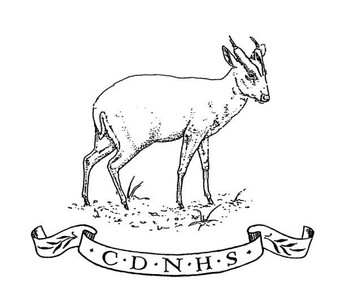Beginnings
The Chesham and District Natural History Society, formed in 1964, is one of the oldest natural history societies in the country. At that time Chesham was fortunate to have many people who cared about wildlife and the countryside in general, and a meeting chaired by our first President, the late Susan Cowdy, MBE, was arranged to talk about setting up a natural history society for Chesham. This was so well attended that many people had to stand. The Society attracted 78 members in its first year, despite the annual subscription being the princely sum of 10 shillings (50p). One of the first achievements was to set out the aims of the Society, to give a purpose and structure, and these same aims are just as important today.
Aims
To foster interest in all aspects of local natural history and in natural history in general.
To encourage conservation and preservation of wild life and sites of natural history interest.
To give opportunity for discussion, exchange of views, dissemination of knowledge and experience and instruction in natural history.
To organise indoor and outdoor meetings to further knowledge in and enjoyment of natural history.
To encourage young people to take an interest in natural history.
To keep records of local natural history and make them available to appropriate record centres.
To extend to Members opportunities offered by affiliation to national and other societies of similar interests.
Progress
The Society in its early years boasted many superb natural history experts including Lady Barlow, who was a granddaughter of Charles Darwin and was recognised as being an excellent botanist. However, it was undoubtedly the expertise, energy and enthusiasm of Susan Cowdy that inspired so many others to follow in her footsteps. One of her most amazing achievements was to take on responsibility for raising the funds and purchasing the island of Bardsey off the north coast of Wales, because of its importance for birds. To her, the impossible just took a little longer to achieve.
There is no doubt that information about the state of the natural world was very limited in the early sixties. However, owing to the growing knowledge within the Society, some gained from the experts who gave talks at the monthly meetings and some from practical experience, the members realised that they needed to become a more active group. This entailed seizing opportunities to comment on all aspects of Local Town Plans, County Structure Plans and other pieces of legislation that would impact on wildlife and wildlife habitats. Chesham was no stranger to conflicts of interest in the planning process and the Society in the 70s and 80s saw numerous threats to precious areas of rich environmental habitat. These were met by constructive comment, often steered by the Society’s chief planning advisor, Ken Austin, who is still very active and provides a valuable link between the Society, local authorities, and various conservation organisations.
For our members who wish to take an active part in conservation management we offer the opportunity to get involved in various local projects working with our partners, the Chesham Environmental Group (CEG).
We are also partners with Chesham Town Council and carry out active management of various areas of land in and around Chesham.
One of our most successful projects is the management of Berkhampstead Field, adjacent to the Recreation Ground, off Nashleigh Hill, Chesham.
Following over 60 years of cattle grazing on this field which ceased in 2008, Chesham & District Natural History Society (CDNHS) were very keen to explore changes to the management of the area with Chesham Town Council (CTC). After working closely together, an environmental management plan was introduced in 2010. At the end of the first year over 50 species of wildflowers and grasses were identified and by 2012 the field had been awarded Local Nature Reserve Status for its superb range of chalk grassland flowers and other habitats.
The area now contributes to CTC’s environmental strategy and is maintained in partnership by CTC, CDNHS, CEG and other local volunteers.
Our members continue to make an important contribution to the furthering of knowledge relating to local and world-wide natural history projects. New members are always welcome, so long as they have a general or specific interest in natural history. Visitors are also welcome to attend any of the Society’s meetings to find out more about what we can do for you and what you can do for us.
If you want to know more details, or want to help, contact Trevor Brawn (CDNHS) on 01494 774945.
